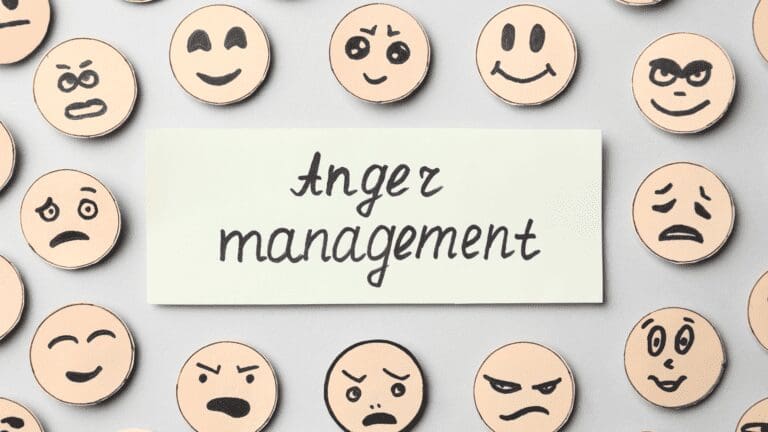Welcome to week four of anger management coping skills. This week we will go over understanding triggers.
If you have missed any part of the series, click here! As always, remember my disclaimer before practicing any mental health information.
What is Anger Management?
If you have issues controlling your anger, you’re not alone. Anger is a normal and natural emotion, but it can negatively affect your mental and physical health and relationships when it becomes overwhelming. That’s where anger management comes in!
Keeping an anger log can be a fantastic first step in managing anger effectively. Here’s how it works:
- Get a notebook or use a digital note-taking app.
- Write down each instance of anger as soon as possible after it occurs. This will help you better understand the pattern of your anger.
- Include details such as the date, time, situation, emotions felt, and physical sensations. This will help you identify what triggers your anger and how your body reacts to it.
- Reflect on the patterns and common triggers in your anger log. This will help you gain insights into your anger patterns and how you can better manage them.
- Use this information to come up with healthier ways to cope with anger in the future. This could be anything from taking deep breaths, practicing mindfulness, or seeking professional help.
By keeping an anger log, you can take the first step towards managing anger and improving your quality of life. So give it a try and see how it can help you!
Check out TherapistAid.com for a printable worksheet.
Goals
The purpose of the coping skill is to help individuals gain control over their emotions, thoughts, and behavior in situations that trigger anger and to handle conflicts more positively and effectively.
- Recognize and understand the triggers that cause anger
- Learn to control and regulate intense anger and aggressive behavior
- Communicate in a non-threatening and assertive manner
- Develop healthy coping mechanisms for managing anger
- Improve relationships and overall quality of life.
Understanding Triggers
Are you tired of feeling like a ticking time bomb, just waiting for something to set you off? Well, the good news is that you can control your anger by being aware of your triggers.
Triggers are simply things or situations that set off your anger. They’re different for everyone, but some common triggers include traffic, stressful work situations, and relationship issues. By being aware of what sets you off, you can take control of your anger and use that knowledge to your advantage.
Here’s how:
- Identify your triggers: Write down a list of things or situations that make you angry. Be specific and honest with yourself.
- Analyze your triggers: Once you have your list, think about why each trigger makes you angry. Is it a personal issue? A past experience? Understanding the root of your anger can help you control it.
- Plan ahead: When you know what sets you off, you can plan ahead and come up with coping skills to deal with those triggers. This can be as simple as taking a deep breath or going for a walk when you start to feel angry.
- Practice mindfulness: When you’re in a triggering situation, take a moment to pause and practice mindfulness. Focus on your breathing and the present moment instead of getting caught up in your anger.
- Reframe your thoughts: Finally, try to reframe your thoughts. Instead of thinking, “This is so unfair!” try thinking, “This is a challenge, but I can handle it.” This shift in mindset can help you control your anger.
By being aware of your triggers and using the knowledge to your advantage, you can control your anger and improve your mental health. So, take a deep breath, and start working on identifying your triggers today!
